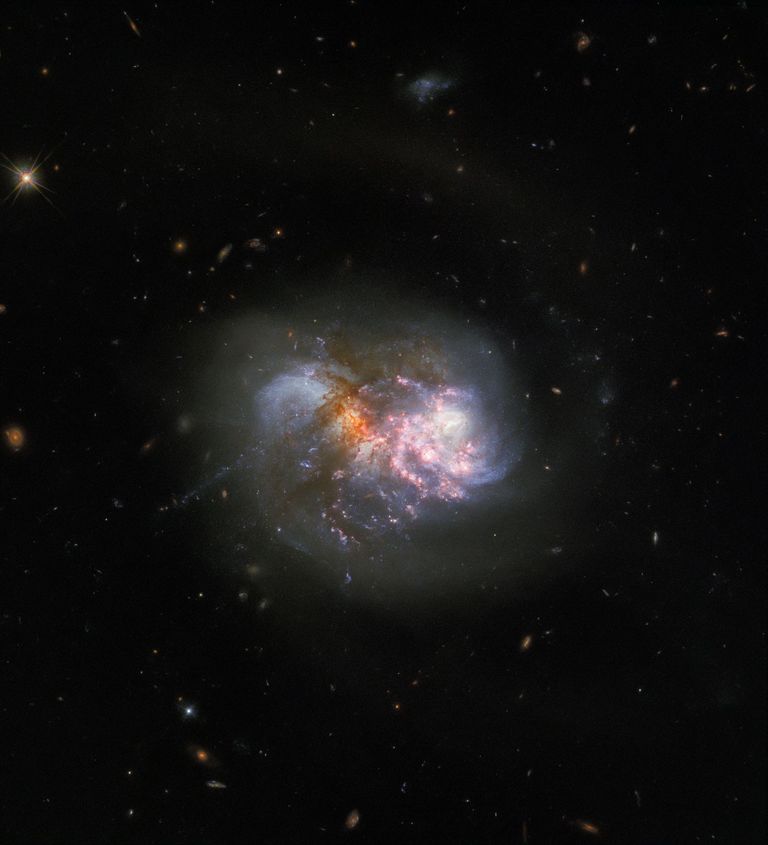Galaxienforschung, Erforschung grosser kosmischer Strukturen, Kosmologie

Die Erforschung von Galaxien und noch grösseren Strukturen im Universum ist eng mit kosmologischen Fragen verknüpft: Wie sind die grossräumigen Strukturen in unserem Universum entstanden? Daraus ergibt sich auch die Frage nach der weiteren Entwicklung des Alls. Im Jahre 2011 erhielten drei Kosmologen den Physik-Nobelpreis für ihre Entdeckung des sich beschleunigt ausdehnenden Universums.
Die Forschergemeinde steht vor vielen weiteren Fragen. Etwa will sie das frühe Universum weiter erforschen oder der geheimnisvollen Dunklen Materie auf die Spur kommen.
Wie werden Galaxien und grosse Strukturen in der Schweiz erforscht?
- Beobachtende Astronomen charakterisieren die Galaxien mithilfe von spektroskopischen und photometrischen Beobachtungen. Von den Resultaten versucht man, Rückschüsse auf die Sternenstehungs-Geschichte innerhalb einer Galaxie zu gewinnen oder die Entstehung der verschiedenen Galaxien-Formen zu verstehen.
- Weitere Beobachter suchen nach neuen Sternsystemen. Bis heute findet man nach wie vor viele unentdeckte Galaxien. Diese sind teilweise zu schwach, als dass sie auf einer Teleskop-Aufnahme gesehen werden könnten. Es werden daher Bildbearbeitungsprogramme eingesetzt, um die unscheinbaren Galaxien im Bild hervorzuheben.
- Einzelne Aspekte einer Galaxie können ebenfalls Gegenstand der Forschung sein. Beispielsweise wird mit Beobachtungen untersucht, wie ein Schwarzes Loch im Zentrum der Galaxie, selbige in ihrer Entwicklung beeinflusst.
- Theoretische Gruppen untersuchen Fragen zur Struktur und Entwicklung von Galaxien mithilfe von numerischen Simulationen am Computer. Das Resultat aus einer solchen Simulation an der Universität Zürich wird im folgenden Film gezeigt.
- Durch die Beobachtung schwacher Gravitationslinsen sammeln Forschende Informationen über die grossen kosmischen Strukturen. Eine Gravitationslinse ist ein sehr massereiches Objekt, das zwischen uns als BeobachterIn und einem anderen Objekt liegt, das wir beobachten wollen. Durch seine Gravitation krümmt das massereiche Objekt die Lichtstrahlen auf dem Weg zu uns. Das Objekt, das wir beobachten wollen, erscheint verzerrt. Eine schwache Gravitationslinse bedeutet, dass der Verzerrungseffekt klein ist. Er ist es für die Forschende nicht sofort zu erkennen. Erst, wenn sie viele Objekte beobachten, ermitteln sie durch statistische Berechnungen den Effekt. Zur Verbildlichung siehe auch Kasten auf der rechten Seite. Dadurch erhalten sie Informationen über die Masserverteilung im Universum und die Dunkle Materie und damit die grossen Strukturen des Kosmos.


